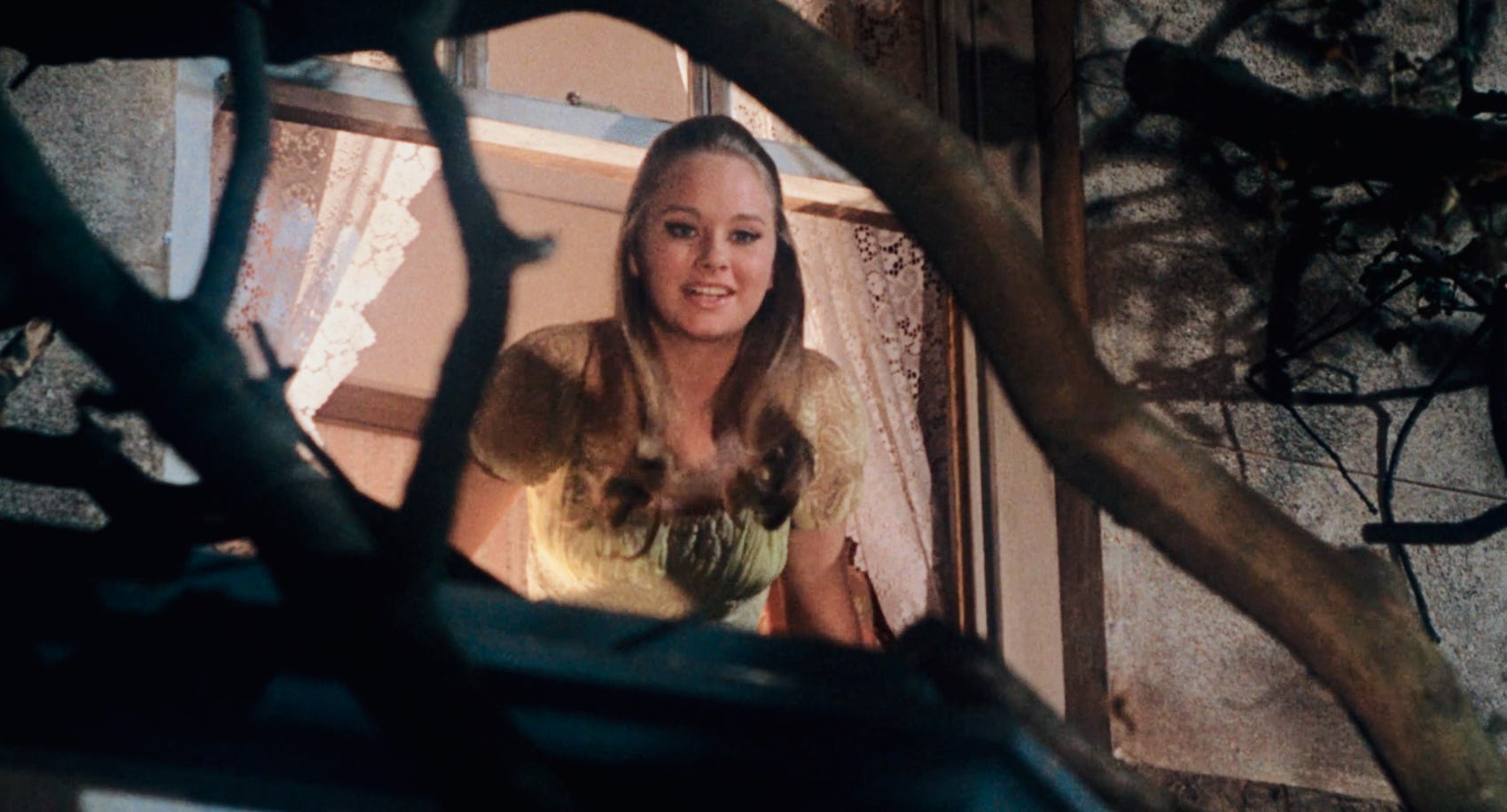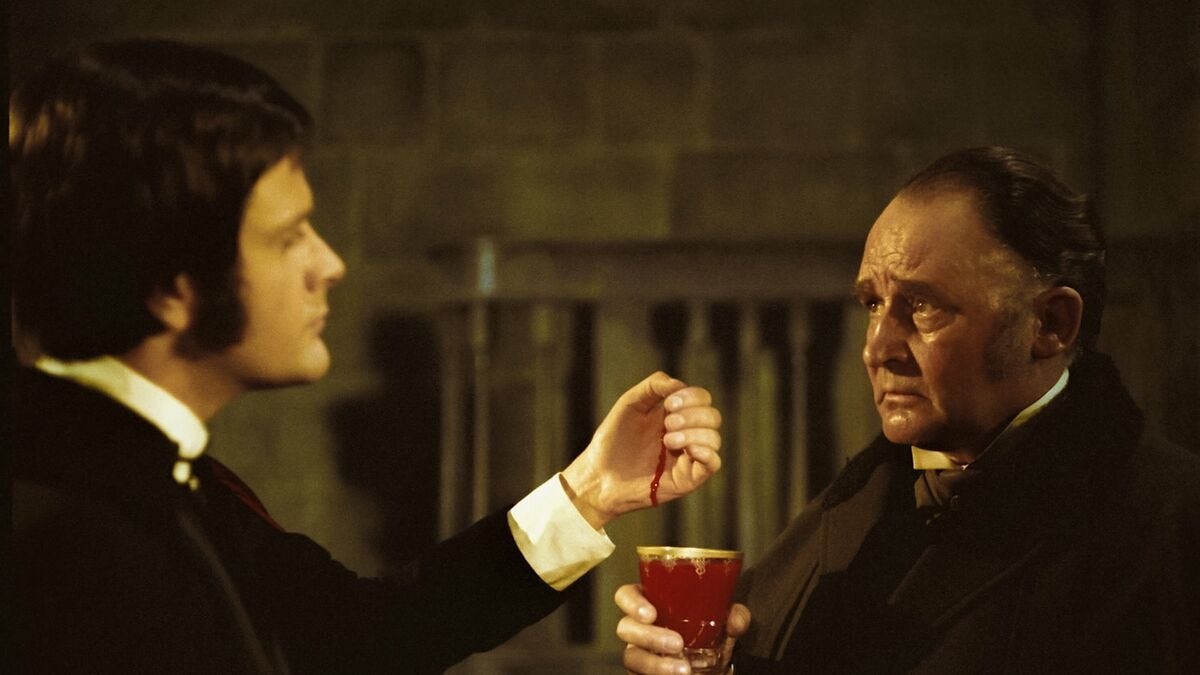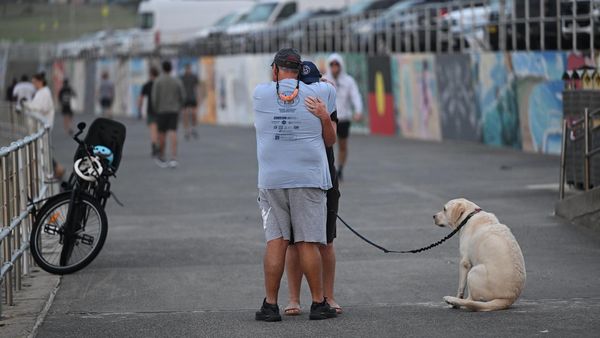
Ten years after The Brides of Dracula proved Hammer Horror could make a Dracula movie without the iconic bloodsucker himself, the legendary studio held up a crucifix to their star attraction once more. At least, that was the plan.
1970’s Taste the Blood of Dracula was initially intended to shun the character Christopher Lee made his own, and instead focus on the fall and rise of his servant Lord Courtley. But, inevitably worried about box office appeal, distributor Warner Bros. issued an ultimatum that struck a different kind of terror for the film’s producers: bring Dracula back to life or watch your latest sequel go up in smoke.
They unsurprisingly opted for the former, although that presented another issue in a leading man unwilling to reprise his most iconic role. “I did have a big problem after the first two,” Lee later said, referring to 1958’s Dracula and the 1966 follow-up Prince of Darkness. “Because all they do is write a story and try and fit the character in somewhere, which is very clear when you see the films. They gave me nothing to do!” But money — or, according to Lee, emotional blackmail — talks, and after negotiating a deal that significantly boosted his bank balance, the cult hero signed on the dotted line.
Taste the Blood of Dracula proves the actor's concerns were valid. The Brit barely has five minutes' screentime, and his lines are so few they could fit on a garlic clove (the opening even repurposes his final scene from Dracula Has Risen from the Grave). But it also proves that a little Lee can go a long way.
Directed by Hammer Horror regular Peter Sasdy, Taste may use Dracula sparingly, but it does so effectively and, it could be argued, subversively. The classic villain is repurposed as the hero of the hour, his personal quest for vengeance doubling as a rootworthy form of retribution for Edwardian society’s most toxic, hypocritical, and downright depraved men.

Hammer’s fifth Dracula entry (and Lee’s fourth) begins in Eastern Europe when, after being manhandled out of his horse-drawn carriage, secondhand store owner Weller (Rory Kinnear) stumbles across a howling and disintegrating vampire. On inspecting the remains, the businessman decides to take home the blood-drenched cloak and ring as potential windfalls, setting the wheels in motion for the latest in a long line of resurrections.
Four men end up paying top dollar for these souvenirs. As philanthropic pillars of their community, William Hargood (Geoffrey Keen), Jonathan Secker (John Carson), and Samuel Paxton (Peter Sallis of Wallace and Gromit fame) seem unlikely customers. But their charitable endeavors are simply a smokescreen for unashamed debauchery; instead of working at the local soup kitchen, these “family men” are more interested in frequenting the nearby brothel.
It’s here they meet Courtley (Ralph Bates), another seemingly distinguished gentleman with a dark underbelly, having been disowned by his family for celebrating a Satanic mass. He convinces the trio that obtaining Dracula’s possessions will guarantee riches beyond their wildest dreams, and while they initially go along with the plan, they refuse to consume the bloody potion Courtley concocts for a late-night ritual. That’s seemingly a wise decision, considering one drink leads to Courtley screaming and writhing around in agony. Instead of helping their new acquaintance, however, the gang beat him to death. For reasons also unexplained, his corpse suddenly mutates into his rejuvenated master’s.

“They have destroyed my servant! They will be destroyed,” the vampire barks, making his intentions crystal clear. And for once, most viewers are likely to be firmly Team Dracula. All three targets are truly loathsome, and Hargood is particularly reprehensible as a drunk who not only admonishes his grown daughter Alice (Linda Hayden) for speaking to another man, but then threatens to attack her.
Yet in a move which, considering the era of its release, draws comparisons with the Manson murders, the vampire doesn’t do the dirty work himself. Instead, he instigates a spate of patricides, with Alice hammering Hargood over the head with a shovel and, in a nice bit of irony, her boyfriend’s newly vampiric sister Lucy (Isla Blair) spearing Paxton with his own wooden stake. Girl power!
Although the latter sadly succumbs to Dracula’s thirst for blood, Taste does allow Alice to join the canon of final girls, albeit with a little help from weedy beau Paul (Anthony Corlan) and the film’s baffling logic: a quick burst of Latin prayer in a hastily restored church is apparently all it takes to reduce the Count to smithereens.

That’s a rather underwhelming denouement to arguably the era’s most progressive and culturally relevant Hammer Horror. Taste may have been set in the late 19th century, but its central themes — female empowerment, conservative hypocrisy, sexual revolutionism — are undoubtedly more suited to the post-Summer of Love. “It wasn’t just a Dracula film per se. We made a film with a story that said something,” producer Aida Young later claimed.
Of course, thanks to a conveniently placed, blood-regurgitating bat, Dracula — and, despite all his protestations, Lee — would return for another helping later that year. Scars of Dracula gave him more to do, but of the 10 times he adopted the famous cape and fangs, Taste provided the most for viewers to sink their teeth into.







